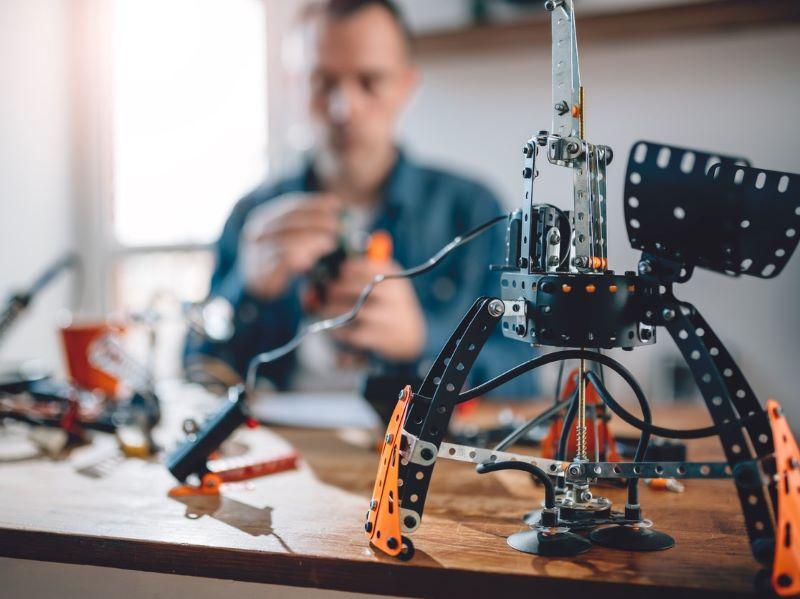This video will cover:
00:46 Home lab kits to encourage student curiosity and exploration
02:35 Why simulation tools further enhance learning
03:34 Creating supporting online teaching materials

This video will cover:
00:46 Home lab kits to encourage student curiosity and exploration
02:35 Why simulation tools further enhance learning
03:34 Creating supporting online teaching materials
Practical skills are an essential part of any engineering degree. They enable students to understand physical and manufacturing constraints, contextualise the theory that they learn in lectures – which at times can be rather abstract – and produce more practical, efficient and durable designs. However, just carrying out scripted hands-on experiments does not allow students to truly harness the value of laboratory work and build the practical engineering skills that will enable them to become better designers.
Students should be able to give their curiosity an outlet and be given a place where exploration and inquiry can take place and, above all, where the value of failure as a success-enabling mechanism is understood. Constructive alignment is a well-known process. Students will only put effort into what they are assessed on.
This is particularly detrimental when it comes to laboratory work, where the focus with performance rather than mastery goals is often observed. The time pressure which is inevitably put on students due to the limited laboratory facilities available exacerbates this problem yet further. To address these issues at the University of Bristol, we introduced loanable home lab kits in 2015. These featured instrumentation that enabled students to carry out many first-year practical experiments at home.
Students really loved these. The removal of time constraints, the provision of many electrical components, that were made freely available to them to put together their own experiments, and the training videos that made starting out straightforward created a fantastic exploration round.
With initiatives of this nature, it is crucial to collect regular feedback and establish a dialogue with students that maximises the effectiveness of improvement cycles. For us this led to the creation of new lab kits in 2020 with a much broader remit, which are now issued to every student at the start of their course and that they can keep forever.
When one considers how much there is to gain in terms of educational value and independent learning opportunities and how this can simultaneously improve the students’ experience and reduce expenditure on campus-based activities, the investment is definitely worthwhile.
Simple kits of this kind however, though powerful, have their limitations and to empower students to truly run wild with their ideas it is important to also give them access to a very powerful simulation tool that they can install on their own machines for free and use for the duration of their degree. This enables experimentation beyond the capabilities of any campus teaching facilities, and an insight that will not be achievable in a physical setting. For instance, taking a peek at the electromagnetic field inside a component.
In my experience, for a simulation tool to be successful, it must hit some crucial targets. Students must feel that it is worth learning. If it’s just relevant to one or two modules they are unlikely to take it up, but if they can use it for several subjects every year, then they will see learning the tool as a high return on investment endeavour. The simulation tool must be powerful but also user-friendly and intuitive.
However, even if it meets these requirements, what is absolutely crucial is to provide students with many bespoke video tutorials which are directly relevant to the material taught in their modules. This enables them to swiftly learn how to use the virtual laboratory environment in a way that helps them with the tasks in hand, and clearly demonstrates its usefulness.
With the tutorials, it is important to avoid an all-or-nothing approach. Some students may want to use the virtual laboratory a little; some may want to take it as far as it can go, so an incremental approach to tutorial design should be employed. A core set of tutorials should be provided that can support students with basic tasks, alongside more advanced video tutorials that enable willing students to go further, explore way beyond the confines of the prescribed syllabus, and empower them to realise their ideas into interesting designs.
When access to campus facilities became near impossible, the work that we had been doing to empower our students to become more independent and self-directed learners enabled us to adapt very quickly and thus not severely impair their learning experience. But our work is never done, and a fervent dialogue continues among all stakeholders to create an even better learning platform from which students can spring as high as they can.
Francesco Fornetti is an associate professor in the department of electrical & electronic engineering at the University of Bristol.
He has been shortlisted for Most Innovative Teacher of the Year in the Times Higher Education Awards 2022. A full list of shortlisted candidates can be found here.
If you found this interesting and want advice and insight from academics and university staff delivered direct to your inbox each week, sign up for the THE Campus newsletter.
comment